
“Rising up in the heart of the city is the great Sonora market, which sells exclusively magic products: colored candles, dissected fish shaped like the devil, images of saints, medicinal plants, blessed soaps, tarots, charms, plaster sculptures of the Virgin of Guadalupe turned into skeletons, and so on. In some back rooms, plunged in semidarkness, women, each with a triangle painted on her forehead, rub bunches of herbs and holy water on those who come for consultations; they practice “cleansing” the body and the aura… Professional doctors, being faithful sons of the university, despise these practices. According to them, medicine is a science. They would like to find a precise, ideal remedy for every illness, with each treatment distinct from all others. They want medicine to be one official method, with no variations, to be applied to patients who are treated only as bodies. (…) To folk healers, on the other hand, medicine is an art. (…) They speak to the primitive and superstitious individual, whom we all carry inside.”
Alejandro Jodorowsky: Psychomagic
What is health? This question is not an easy one to answer. Based on various notions of what it means to be healthy, the approaches to healing and prevention differ as well. Health is definitely a certain norm (and instrument of normalization); however, in our society, it has also become a goal which we have an obligation to reach. We have gradually internalized Foucauldian biopolitics, so there is no need for external surveillance of our health; however, we are individually driven by the moral appeal (and social expectation) to be healthy and as fit as possible; both physically and mentally. A healthy life style (along with discovering and deepening of individual subjectivity and its creative potential) has in fact become a trend (naturally with regard to the socioeconomic stratification of the population), similarly to conscious consumerism which can easily turn into beauty consumerism by the affirmative force of capitalism.
Thus the first layer of the Healing exhibition lies in perceiving health as part of the life style of the western society which must react to problems which it, to a large extent, itself generates. The second layer of the exhibition consists in the interconnection of these modern solutions and approaches that could almost be labelled as archetypal. In today’s globalized world, it is often difficult to draw a clear line between what is modern and progressive (qualities that can be linked to the development of technology, science, chemistry etc.) and what essentially relies on long tradition (which, on the contrary, is based on inherited knowledge, natural resources as well as collective rituals and irrational faith). The theme of medicine, healing and therapy is thus discussed with respect to their paradoxicality: whether it is constituted by the intersection points between rationality and faith, science and magic, procedure and ritual or between natural and artificial substances or aids.

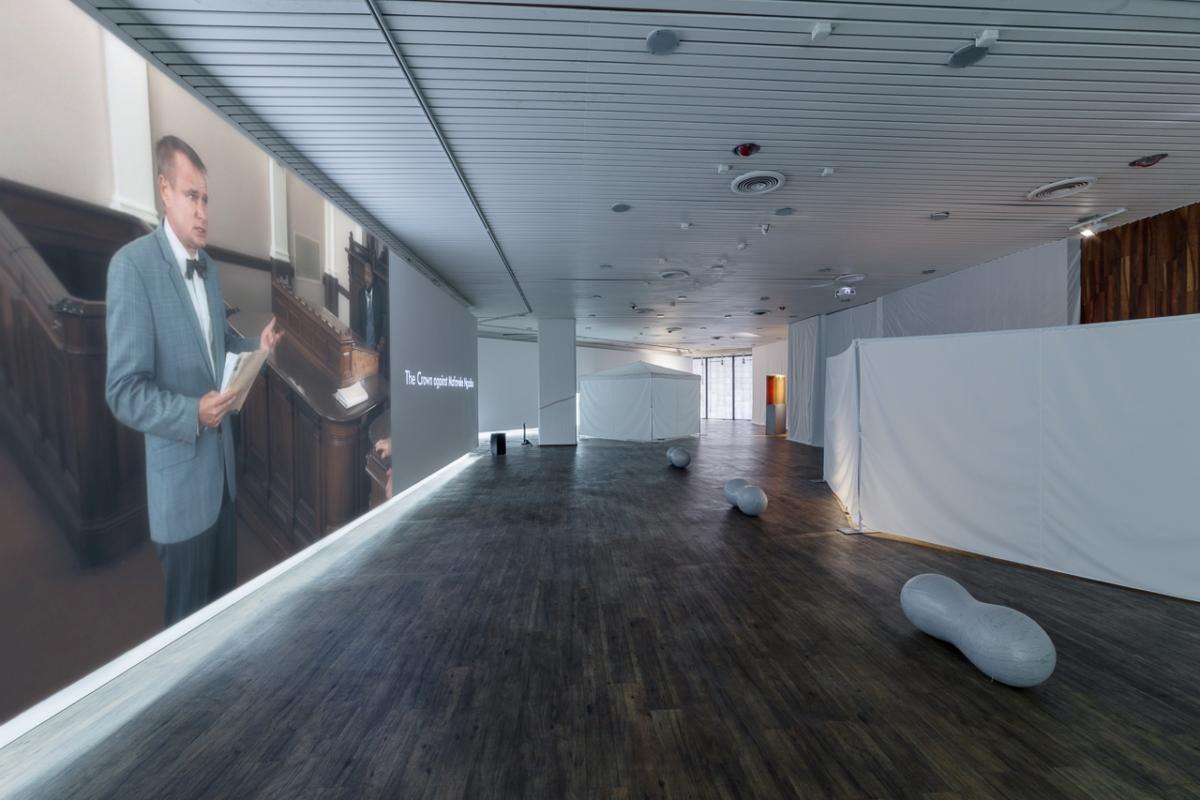
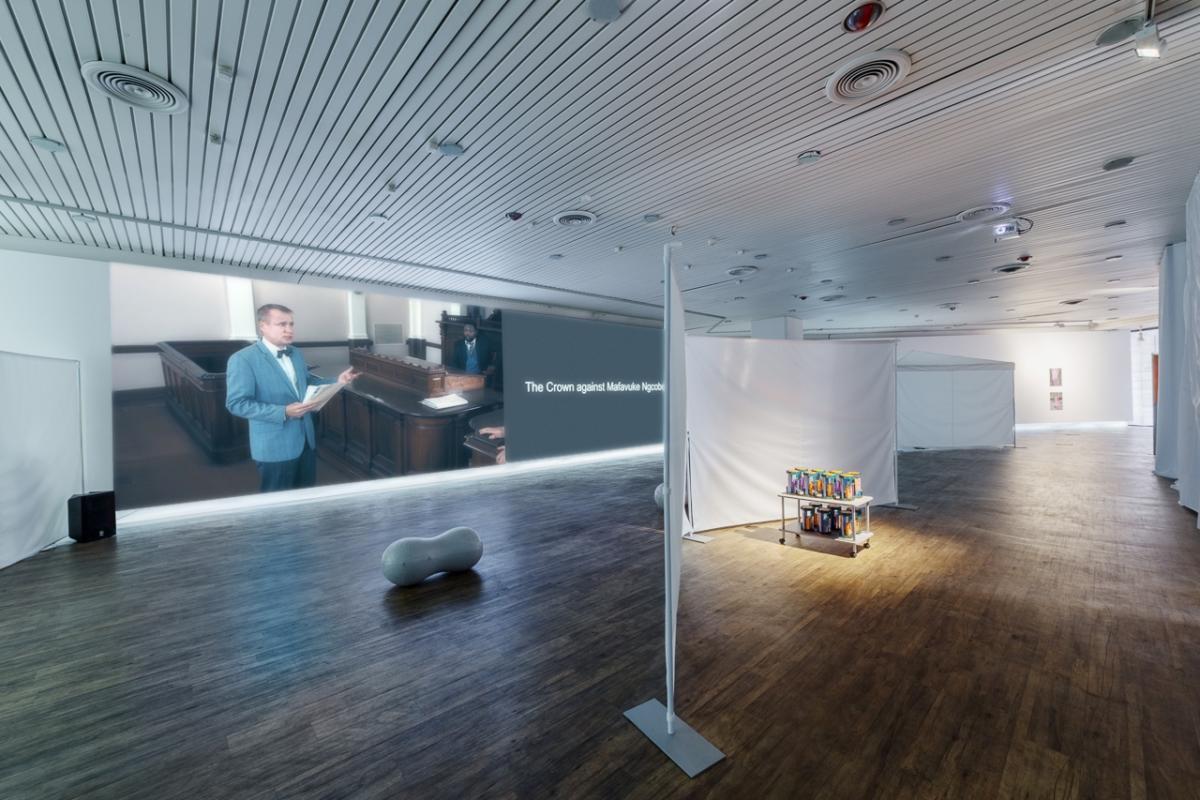
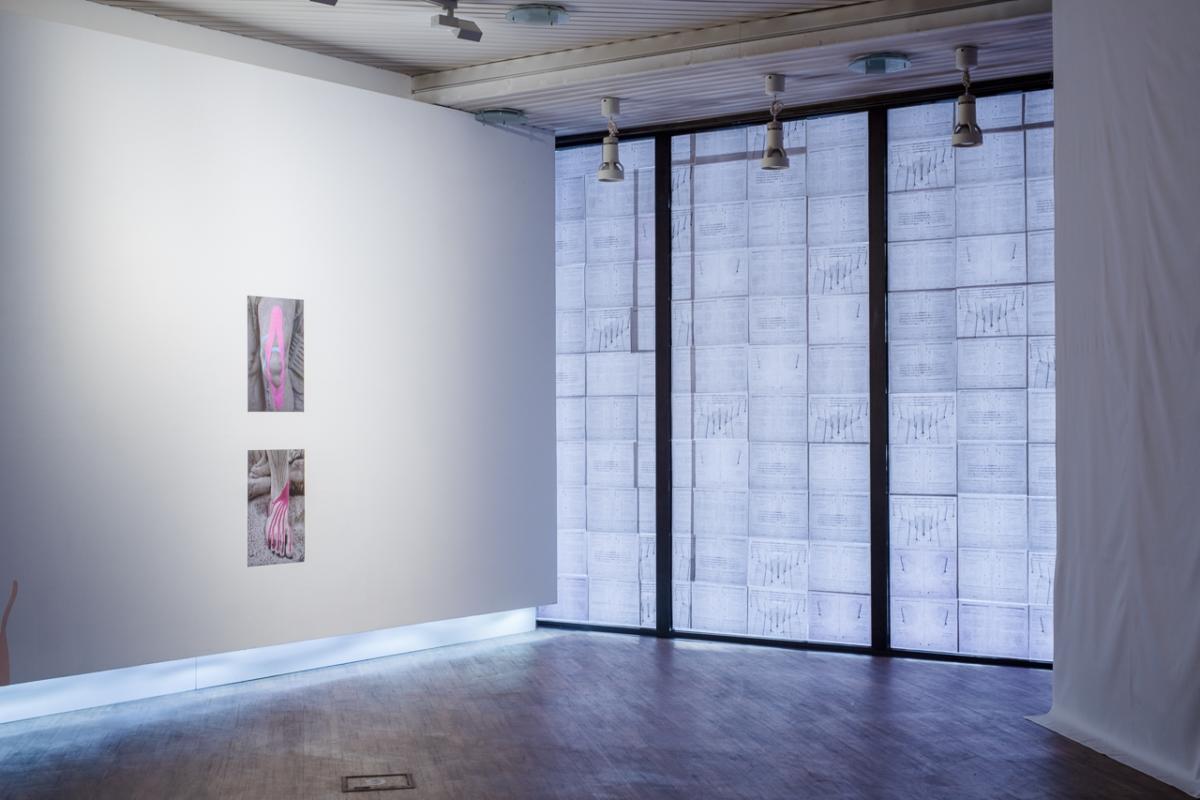


The metaphor of merging or converging of two realities (modern and traditional, cultural and natural) is indicated by the very architecture of the exhibition designed by Jakub Jansa. The architectonic elements are loosely inspired by the motive of a field hospital shelter. It symbolizes the sterile medical practice stepping into the chaotic landscape environment. At the same time, the shelter can evoke the environment of trade fairs and business which, too, are naturally closely related to the field of health care. Exercise and rehabilitation balls are placed in the gallery for the visitors to sit on to enlighten the atmosphere and to enable the viewers a more physical and active experience of the exhibition.
The 2-channel projection of the films by Uriel Orlow give several clues on how to read the exhibition as a whole. The character of Mafavuke Ngcobo from The Crown Against Mafavuke represents a hybrid approach to healing based both on traditional practices and the knowledge of African healers and on the processes of contemporary western medicine. The film reenactment of the court hearing (inspired by a real case) is accompanied by the documentary film Muthi capturing the current use of natural resources as medicaments in South Africa. The case of Mafavuke, who sold his medicinal products to whites as well, shows the theme of medicine in the context of the colonial heritage and today’s reality of globalization. While touching upon the aspect of financial interests and strong competition in health care, it primarily formulates the opinion, voiced by the protagonist at the end of the film, that the future lies in the symbiosis or even merging of modern and traditional medicine.
The theme of the boom of traditional Chinese medicine in the West has been a long-term interest of Jana Doležalová. In her subtle installation mEDICINE, which constitutes the first part of her broader series, the artist displays minerals, plants and animal materials that have been used in the Far East for thousands of years for healing or health improvement. Despite the attempt of the Cultural Revolution in China to eradicate this element of life in the 1960s, today it is on the rise again, reaching more and more supporters in Europe and the US. However, unlike academic doctors and scientists, who are primarily irritated by the unprovability of reliable effects of Chinese medicine, Jana Doležalová focuses primarily on its ethical aspects related to ecology. In many cases, the proliferating business with this form of healing is responsible for the reduced numbers of endangered species. However remote the idea of buying an “enhancement supplement” made out of rhino horn may seem to us in Europe, the sources of alternative medicine can potentially raise moral questions similar to those many of us ask in connection with animal testing in the pharmaceutical industry.




Scientifically unproven medicinal effects are also discussed in the work of Johana Střížková. For the Berlin exhibition, she created a monumental aquarium for kombucha growing. Made by the fermentation of kombucha “fungus” (in fact it is a symbiotic culture of bacteria and yeast), the drink is considered by many to be nothing short of an elixir of life with very positive effects on physical condition and is particularly popular in holistic medicine. It is attributed with the ability of boosting the immune system and the quality of sleep, detoxification, anti-rheumatic effects and improved heart and brain performance. Although these qualities of kombucha are magnified by almost mythological stories from the Far East and Russia, they have not yet been scientifically proven. However, the potion is gaining more and more fans; in places like Berlin, it has actually become a cool life style affair. You can get a taste of Johana Střížková’s kombucha right at the exhibition.
The poetic video Inner Monologue by Miroslava Večeřová and Pavel Příkaský is a playful and hypnotic rendition of the union between rationality and irrationality: medicine and magic, magic and medicine. A body in a doctor’s office is subjected to obscure procedures while the voiceover tells of the promise of constantly developing technologies to establish a post-human reality. However, the motive of body painting introduces rather ritual and tribal elements. These are further elaborated by the two artists in a photographic series employing the technique of body taping for its aesthetic qualities. Sticking special textile tapes in diverse color renditions to the body reminds of a primitive body decoration which can serve as a mere accessory; however, in the hands of shamans, the process could also be a healing ritual. At the same time, the body tapes evoke the contrary notion of future technological body enhancement. Last but not least, they also represent an object that is becoming increasingly popular as a functional medical aid and often also a signifier of an active and therefore healthy and thus desirable life style.
A twist from a protective medical aid to a fashion accessory was realized in the work of Romana Drdová. Her series of surgical masks which originally come from the environment of operating rooms is based, to a considerable extent, on her fascination by Asian culture. Overpopulated and industrially polluted cities such as Beijing, Shanghai and Tokyo suffer from intensive smog and high dust levels, and wearing surgical masks has almost become a necessity for local citizens. While they are worn as prevention of respiratory diseases and protection from viral infection in the overcrowded urban infrastructure, the masks have also become a cultural symbol and an element to accentuate one’s personal style. In the rendition of Romana Drdová, the surgical mask becomes a kind of a primitive mask which rather decorates than protects.
The everyday reality of modern man is also reflected in the work of Martin Kohout. His objects from the installation Boosted EXL5006XL/M make use of prefabricated lamps simulating daylight. The installations realized already in 2014 anticipated the artist’s current interest in the issue of night work and its impact, especially on health. Contact with daylight stimulates our mental state, physical functions as well as biological rhythm. However, in practice (although not necessarily while working on night shifts), many of us spend a significant part of the day in interiors with artificial illumination, which can have a negative impact on our health from a long-term perspective. Technology offers a possible solution: artificial daylight. This physiologically justifiable therapy is interesting from the perspective of a paradoxical compensation of the lack of the natural by the artificial, while also being symbolical; since the healing “substance” is nothing but daylight, a “force” that can even have a mystical or archetypal interpretation.

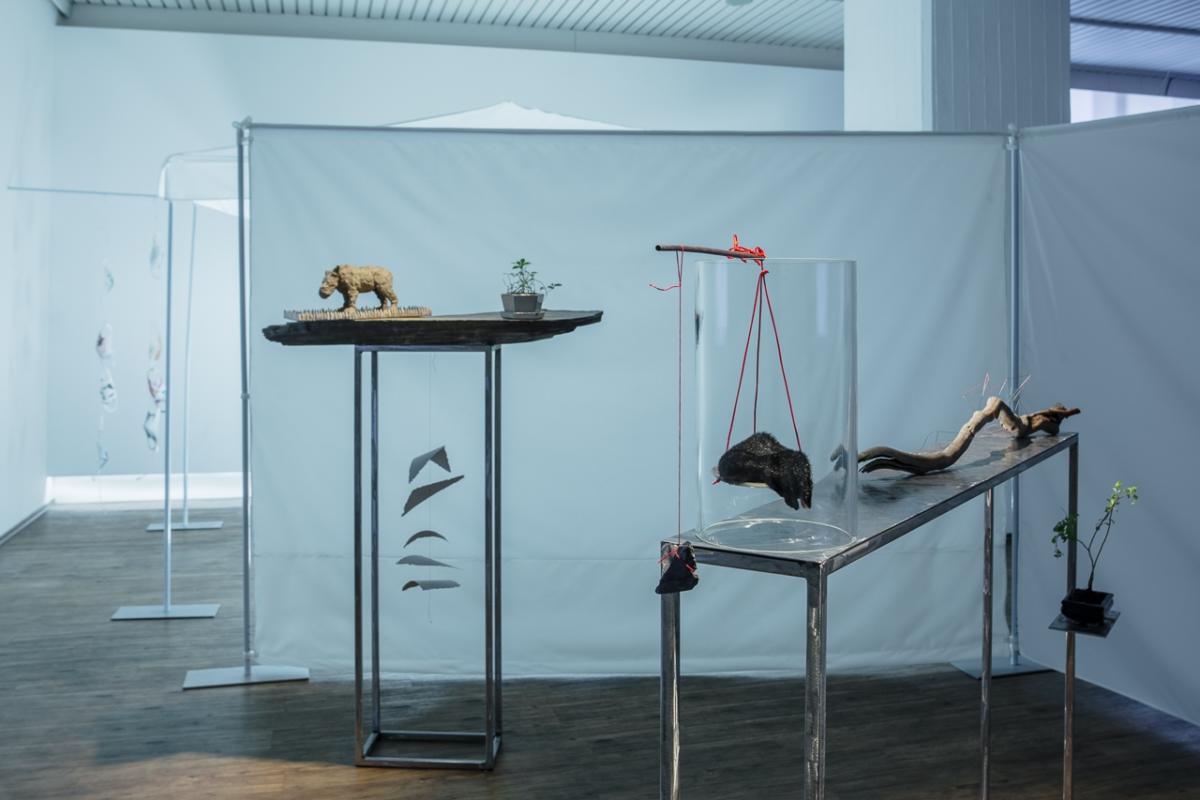
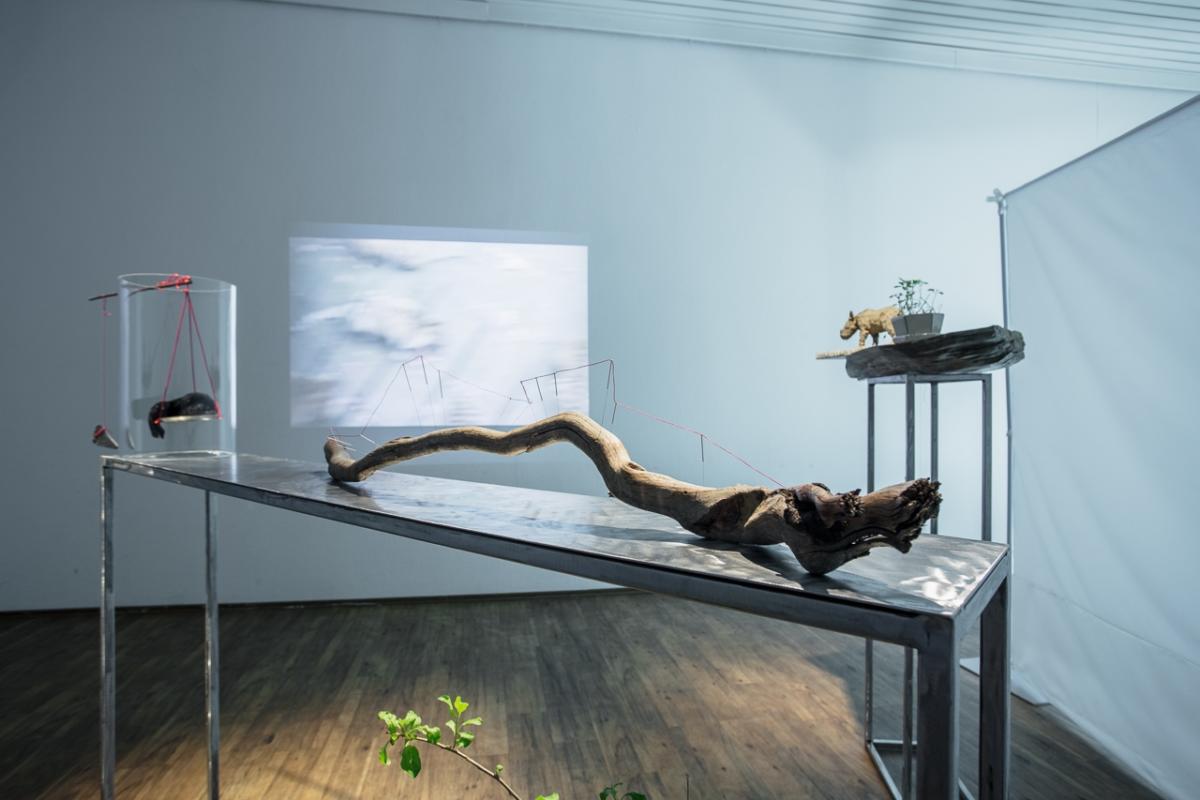

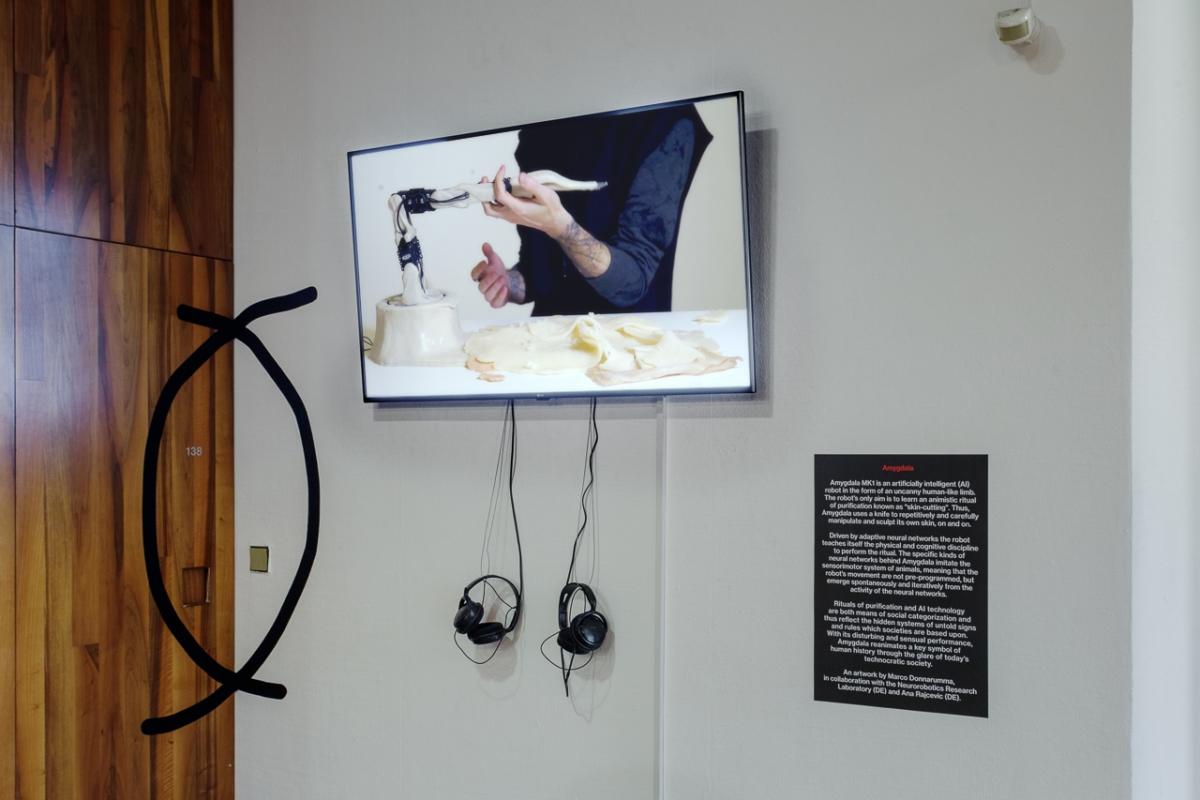
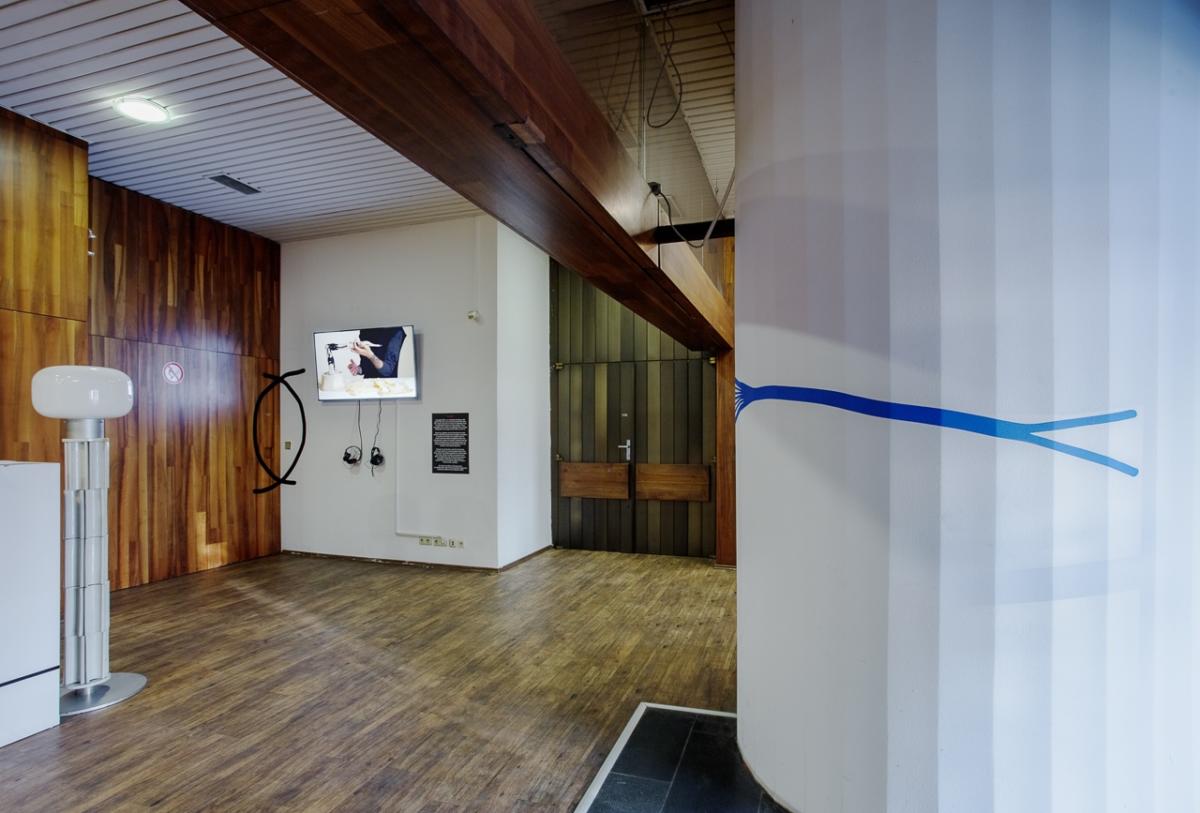
A certain “primal”, animal energy is also present in the video Sometimes They Almost Feel Happy by Barbora Kleinhamplová. It captures the exercise or therapy of a group of people at a laughter yoga class. The basic proposition of this method is the fact that our body cannot tell the difference between artificially induced and spontaneous laughter, so we can induce laughter and the endorphins it produces intentionally. It seems that this exercise, which may remind of a ritual ecstasy, is a perfect therapeutic tool for the prevention of depression and burnout. Another essential layer of the work of Barbora Kleinhamplová is the reflection of the working conditions in today’s society. The emotional roller coaster shown in the video can thus be interpreted as a reflection of the demands and expectations we encounter in our everyday work. One can easily imagine an employer who organizes similar “relaxing” meetings to ultimately increase the productivity at work.
Jakub Jansa’s project called Spiritual Fitness deals with the precondition of effectivity, creativity, self-confidence and personal drive in an explicit and at the same time ironic way. By employing the formal register linking new age preachers and life coaches, it builds a brand and “product” which is to cure our inadequacy. The key for an instant increase of individual motivation and performance lies in acts that are “magical” in their absurdity – strange physical positions or human touch. These motives, too, have something archetypal about them; since touch is one of the characteristic traits of natural healing. At the same time, Spiritual Fitness holds the mirror up to us, saying that it is not enough to heal our body and mind and preventively maintain the healthy state but we also need to take care of our performance fitness. For it is no less important than being healthy, beautiful and successful…
Ritual as a way towards self-improvement and cleansing also plays a key role in the work by Marco Donnarumma. Amygdala, which is only present in the form of documentation at the current exhibition, is a robotic prosthesis based on the principle of artificial intelligence. The ability of the robotic “arm” to learn demonstrates the appropriation of an animistic ritual of cleansing through the perforation of skin. In his video spot, the artist presents a sophisticated “tool” which corresponds with the latest development of prosthetics; however, its only task is to perform a primitive and mystical act.
As a whole, the exhibition aims to show the diverse ways of approaching the theme of healing and health today from the perspective of contemporary art which puts this issue within broader social, political and economic context. The exhibition builds on the tension between the rational and irrational aspects of healing (without siding with the former or the latter) to show how the two positions are in fact interconnected and, in the end, perhaps even inseparable.
Imprint
| Artist | Jana Doležalová, Marco Donnarumma, Romana Drdová, Jakub Jansa, Barbora Kleinhamplová, Martin Kohout, Uriel Orlow, Johana Střížková, Miroslava Večeřová & Pavel Příkaský |
| Exhibition | Healing |
| Place / venue | Czech Centre Berlin |
| Dates | 23 February – 12 April 2018 |
| Curated by | Tereza Jindrová |
| Website | berlin.czechcentres.cz |
| Index | Barbora Kleinhamplová Czech Centre Berlin Jakub Jansa Jana Doležalová Johana Střížková Marco Donnarumma Martin Kohout Miroslava Večeřová & Pavel Příkaský Romana Drdová Tereza Jindrová Uriel Orlow |
